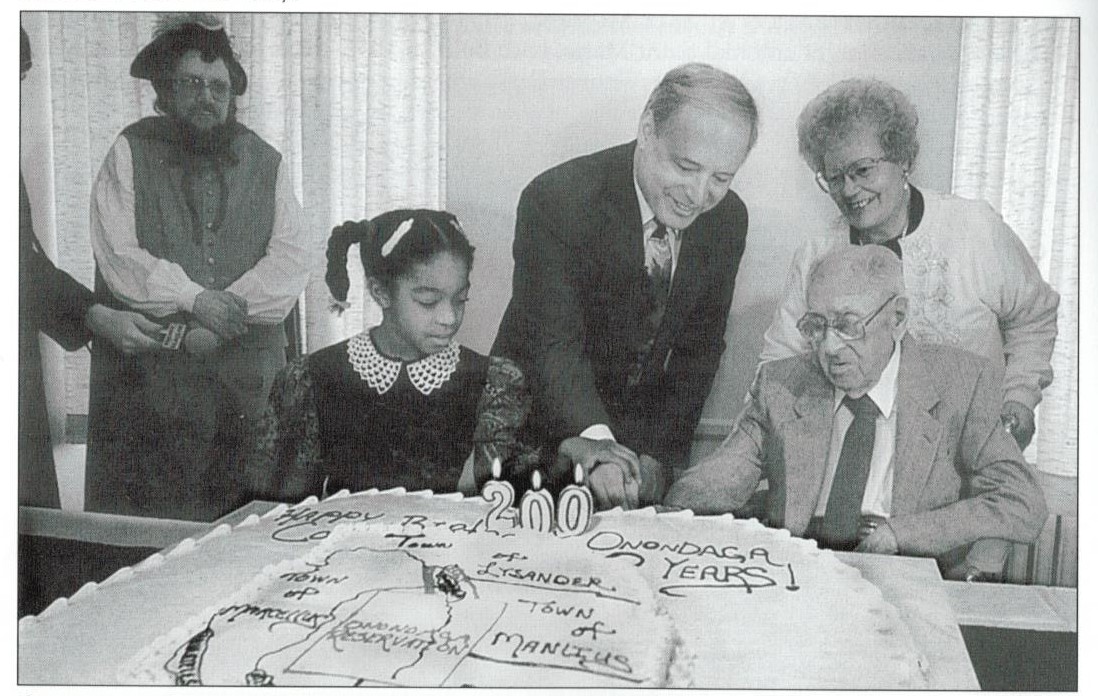
On March 5th, 1794, Onondaga County officially became New York’s 21st county. It was originally comprised of 1.75 million acres and included townships of the Military Tract (bounty land for soldiers who fought in the American Revolution). However, it did not include the reservation for the Onondaga Nation or the Salt Reservation. 20 years after the founding of the county, parts of Oneida and Onondaga Counties were taken to form the new Oswego County. In 1894, the centennial celebration kicked off with the firing of 100 guns in Armory Park and an enormous parade with numerous speeches by prominent citizens. In 1994, the bicentennial was observed with a birthday party at the Onondaga Historical Museum on Montgomery Street, photographed above. In attendance was Ed Sauer, a centenarian who was a young child when the county celebrated its 100th anniversary.
Did you know: At one time, the county was comprised of a large area of central and northern New York after its split with Albany County? 20 years after the founding of the county, parts of Oneida and Onondaga Counties were taken to form the new Oswego County.
Where does the name Onondaga come from?
The name Onondaga derives from the name of the indigenous group who lived in this area at the time of European contact, one of the original Six Nations of the Haudenosaune (“People of the Long House”), an alliance of native nations united for hundreds of years by traditions, beliefs and cultural values. Also referred to as the Iroquois Confederacy or Six Nations, the Haudenosaunee consist of the Mohawk, Oneida, Cayuga, Seneca, Onondaga, and Tuscarora Nations. The Onondagas, or People of the Hills, are the keepers of the Central Fire and are the spiritual and political center of the Haudenosaunee. The Onondaga Nation maintains traditional cultural views and a traditional system of government. You can learn more about this by visiting the Skä•noñh – Great Law of Peace Center.

